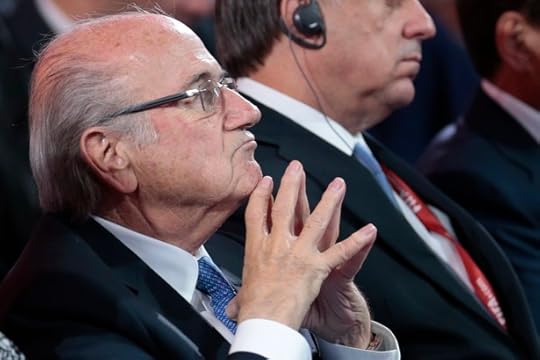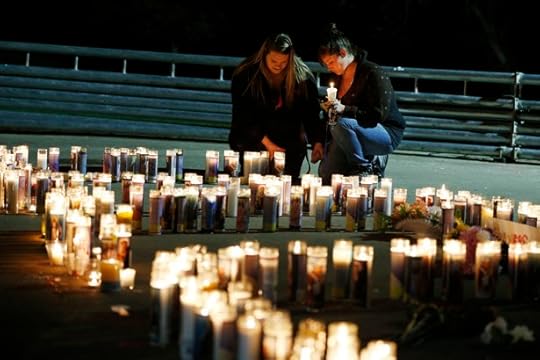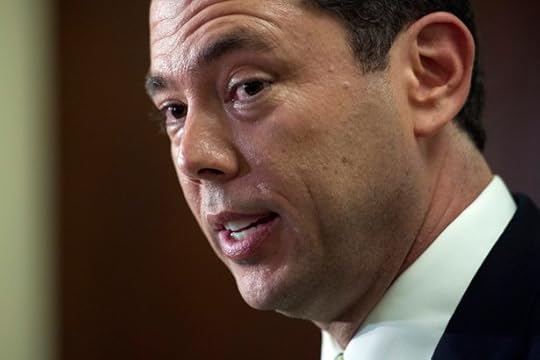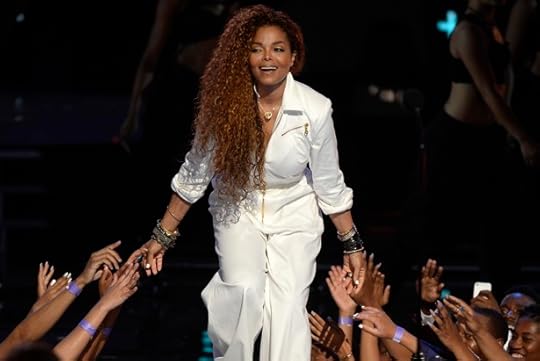Atlantic Monthly Contributors's Blog, page 332
October 3, 2015
The Luxury of Silence

“. . . und wovon man nicht reden kann, darueber muss man schweigen.”
(“. . . and about that of which we cannot speak, we must remain silent.”)
The philosopher Ludwig Wittgenstein’s injunction in his 1922 Tractatus Logico-Philosophicus to respect the limits of language seems like a self-evident assertion. But silence is much more than the homage we offer ignorance, the abashed confession we sigh out of shame, the prayer we address to the ineffable.
Today silence is also a commodity, one bought and sold at prices rivaling our most sought-after consumer goods. “Let us have the luxury of silence,” Jane Austen writes in Mansfield Park. Unfortunately, the cost of that luxury is increasingly beyond the means of most shoppers. And most surcharges for silence now profit those who have produced the noise we seek to escape.
Few industries have moved as aggressively to charge for the alleviation of the din they themselves generate as air transport. But while airlines have grown thuggish in extorting payment for formerly free amenities of travel, complaints about add-on fees seldom extend to the steep price of admission to their airport lounges, among the most successful of boutiques peddling silence.
To anyone who has weathered squawking public address announcements about gate changes or final boarding calls or picking up the nearest courtesy phone, to anyone who has cringed beneath a loudspeaker blaring Muzak or the narration of a CNN special on obesity in American pets, or to anyone who has been startled by a beeping cart bearing the disabled across a terminal, it will come as no surprise that the most welcoming feature of the airport lounge is the muted lighting and dampened sound that greet one in its reception vestibule. For beyond the free chips and fresh fruit, the complimentary soft drinks and house wines, and the selection of trade magazines offered for the guest’s reading enjoyment, travelers primarily purchase respite from the bustle of the terminal.
The layout of such lounges segregates silent work areas from carpeted bars and soundproofed playrooms for children. Even in their most convivial areas, where television screens display market news and sporting matches, a hushed decorum is maintained, with outbursts a rarity. Offered by airlines to first-class ticket holders and frequent fliers who have purchased annual club memberships, airport lounges make clear both in their promotional literature and their discreet entrances that segregation of noise from silence is an expression of segregation by class.
American Airlines, for instance, explicitly markets its “Admirals Club” as an expression of rank: “Treat an Admirals Club lounge as an oasis of peace—away from all of the airport hustle. Because we know a little space to yourself can add up to a feeling, well, really big.” The United Airlines Club promises that, for its $500 annual fee, you will be able to “Relax in a sophisticated environment when you wait for your flight.” Not surprisingly, many clubs have dress codes.
The association of silence with wealth is not a recent marketing strategy, of course, but the marriage of tranquility and privilege is, in fact, the very purpose of airline lounges.
This reverence that silence pays affluence is even more obvious once the traveler ascends to the heavens, for noise can be subdued not merely in the airport but on the airplane itself. First introduced in 1986 for the protection of the hearing of pilots, Bose noise-canceling headphones have been used on NASA’s space shuttle and on the International Space Station. Now available in consumer models starting at $300, these battery-powered headphones mute the roar of the massive jet engines just a few feet away. Having inherited a pair of these headphones from a deceased relative, I can attest personally to the extraordinary effect of this technology: One does arrive less exhausted from a cross-country flight when that journey occurs in near silence.
The rich, apparently, are willing to endure even nausea for the luxury of silence.Of course, the Bose Corporation is well aware of how attractive silence will seem to fellow travelers during such a grueling flight. So each headphone case is equipped with a small sleeve stuffed with “Courtesy Cards” in French and in English to distribute to anyone asking how to get a pair.
Thus, for a $500 airline club membership and a $300 pair of noise-canceling headphones, one can travel the sky in silence, a luxury that—like most luxuries—begins to feel less a luxury and more a necessity the more often one indulges in its pleasures.
But flight is not the only mode of transport that demands a premium from its customers to mute the racket it creates.
In a 2014 comparison of fuel economy, for example, Road & Track magazine issued a surprising declaration: “America’s most fuel-efficient new car isn’t a Prius: You’ll never believe what beats it.” The magazine named a Mercedes the winner and went on to explain its choice. “We’re not picking on the Prius (it’s a technological marvel), but it’s a car created solely for efficiency, and that shows in its road manners. The $52,634 E250 is a luxury car that just happens to get unbelievable mileage. It’s 1001 pounds heavier than the Toyota but feels as if every ounce of that went toward noise cancellation and luxury.” Notice that “noise cancellation” is the one luxury singled out by the author.
Even more dramatic attention is paid to Mercedes noise cancellation in a 2015 article in The Wall Street Journal, “Mercedes-Maybach S600: The Silence Is Deafening.” In describing the incredibly quiet ride of this sedan with a base price of $190,275, the author explains the silence is not merely deafening; it is sickening:
I’m getting woozy. Something about this car is playing havoc with my vestibular system. . . .
The rear cabin, the company claims, is the quietest ever in a production car. In fact, Daimler developed the aero acoustics in its new wind tunnel with rolling road, which is able to conduct experiments with angled flows of air and crosswinds. The larger the door—and the Maybach has some big ones—the more likely a crosswind may pull the door away from the frame, creating small acoustical hot spots. That’s why the door seals look like rolled-up wetsuits.
In any event, wind noise is virtually nonexistent. Tire noise and vibration barely palpable. And then I realize the feeling. It’s simulator sickness.
This condition is common to even experienced pilots training in simulators with wraparound 3-D screens that tell their brains one thing while their inner ear tells them something else. The Mercedes-Maybach S600 is so attenuated, so muffled and muted, it turns down the sense data to the point where things almost don’t compute, at least from the back seat.
The rich, apparently, are willing to endure even nausea for the luxury of silence.
But if silence sickens the rich, noise is an affliction of the poor. Alex Lockwood, in a Counterfire review of John Stewart’s Why Noise Matters (published by Earthscan in 2011), points out the disproportionate effect of noise on those living in poverty:
At around 50 decibels people begin to get annoyed with daytime noise (at night, it is 30 decibels). At around 55 decibels (a 10 decibel increase represents a doubling of sound levels) people become extremely annoyed. Above 130dbs is the human threshold of pain, although the gradual loss of hearing from continuous noise is a greater worldwide problem. One of the strengths of Why Noise Matters is that it offers up noise pollution as a global phenomenon. While its research is not (and does not claim to be) comprehensive, this global approach highlights the inequities in experiences of noise pollution between rich and poor, industrialised and industrialising, and asks why more is not being done to tackle noise as a social injustice. Noise is, as are other forms of pollution, a class issue.
For example, a MORI survey (2003) revealed that almost 20% of people in the UK, with a household income of less than £17,500, regularly hear noise from neighbours, including 93% of social housing tenants. In contrast only 12% of people with an income of more than £30,000 could hear their neighbours. Looked at globally, the divide between the peaceful rich and harried poor gets bigger according to where people live. In nearly all countries, from industrialised nations such as the UK, through to India, Thailand and across Africa, because poor people are more likely to live closer to major sources of noise pollution (roads, airports, industry), they suffer disproportionately more annoyance. Noise is not only the forgotten pollutant, but is increasingly what Les Blomberg, executive director of the Noise Pollution Clearing House, calls “second hand noise.” More and more, it is not created by those who suffer from it.
The hushed halls of affluence buffer the rich from the hubbub of poverty, but for the poor, the clatter of modern life—like other forms of pollution—is inescapable. And as noise continues its inexorable advance into the quietest eddies of wilderness, even the rich may find a silent retreat impossible to locate.
This article has been excerpted from John Biguenet’s new book, Silence, part of the Object Lessons series.









October 2, 2015
FIFA’s Blatter Under Pressure

Updates on October 2 at 5:07 p.m.
Visa, McDonald’s, and Coca Cola, among the biggest sponsors of the FIFA World Cup, have called on Sepp Blatter, the head of soccer’s governing body, to resign immediately.
Here’s McDonald’s statement:
The events of recent weeks have continued to diminish the reputation of FIFA and public confidence in its leadership. We believe it would be in the best interest of the game for FIFA President Sepp Blatter to step down immediately so that the reform process can proceed with the credibility that is needed.
Coca Cola said:
For the benefit of the game, The Coca-Cola Company is calling for FIFA President Joseph Blatter to step down immediately so that a credible and sustainable reform process can begin in earnest. Every day that passes, the image and reputation of FIFA continues to tarnish. FIFA needs comprehensive and urgent reform, and that can only be accomplished through a truly independent approach.
Visa added:
We believe no meaningful reform can be made under FIFA’s existing leadership. And given the events of last week, it’s clear it would be in the best interests of FIFA and the sport for Sepp Blatter to step down immediately.
CNBC reported that AB INBev, the parent company of Budsweiser, echoed those calls.
Blatter’s response:
Breaking: Full statement from Sepp Blatter's lawyer on calls from Coca Cola and McDonalds to step down immediately. pic.twitter.com/As3y91c0Lj
— Richard Conway (@richard_conway) October 2, 2015
The pressure from the corporations comes amid increased scrutiny of both FIFA and Blatter. FIFA has faced allegations of corruption for years. Those drumbeats became more prominent after the 2018 and 2022 World Cups were awarded to Russia and Qatar, respectively. They were capped in May by a joint U.S.-Swiss operation that resulted in the arrests of several FIFA executives in Zurich.
Last week, the Swiss attorney general’s office announced it had opened a criminal investigation into Blatter. As my colleague Matt Ford reported:
Blatter faces allegations of criminal mismanagement and misappropriation during his presidency. According to the attorney general’s office, the allegations center on a contract Blatter signed with the Caribbean Football Union in 2005.
To put in perspective FIFA’s clout and the power exercised by Blatter, consider this from Matt:
FIFA commands tremendous financial resources and international clout. Blatter sat at the center of the web of regional and continental fiefdoms that shape the world’s most popular sport for more than 17 years. Corruption allegations dogged various FIFA officials throughout his tenure, and as recently as last week, but Blatter endured, aided by his mastery of the organization’s election processes and his dispensation of patronage to smaller, far-flung national soccer organizations that backed his reign.
But that reign ended on June 2, days after Blatter was re-elected to a fifth term as FIFA’s president when the U.S. announced its indictments. Blatter resigned the presidency and announced new elections. He says he will stay in the position until that election takes place in February 2016. But it’s unclear if the pressure from the biggest corporate sponsors will allow him to stay in office until then.









FIFA's Blatter Under Pressure

Updates on October 2 at 5:07 p.m.
Visa, McDonald’s, and Coca Cola, among the biggest sponsors of the FIFA World Cup, have called on Sepp Blatter, the head of soccer’s governing body, to resign immediately.
Here’s McDonald’s statement:
The events of recent weeks have continued to diminish the reputation of FIFA and public confidence in its leadership. We believe it would be in the best interest of the game for FIFA President Sepp Blatter to step down immediately so that the reform process can proceed with the credibility that is needed.
Coca Cola said:
For the benefit of the game, The Coca-Cola Company is calling for FIFA President Joseph Blatter to step down immediately so that a credible and sustainable reform process can begin in earnest. Every day that passes, the image and reputation of FIFA continues to tarnish. FIFA needs comprehensive and urgent reform, and that can only be accomplished through a truly independent approach.
Visa added:
We believe no meaningful reform can be made under FIFA’s existing leadership. And given the events of last week, it’s clear it would be in the best interests of FIFA and the sport for Sepp Blatter to step down immediately.
CNBC reported that AB INBev, the parent company of Budsweiser, echoed those calls.
Blatter’s response:
Breaking: Full statement from Sepp Blatter's lawyer on calls from Coca Cola and McDonalds to step down immediately. pic.twitter.com/As3y91c0Lj
— Richard Conway (@richard_conway) October 2, 2015
The pressure from the corporations comes amid increased scrutiny of both FIFA and Blatter. FIFA has faced allegations of corruption for years. Those drumbeats became more prominent after the 2018 and 2022 World Cups were awarded to Russia and Qatar, respectively. They were capped in May by a joint U.S.-Swiss operation that resulted in the arrests of several FIFA executives in Zurich.
Last week, the Swiss attorney general’s office announced it had opened a criminal investigation into Blatter. As my colleague Matt Ford reported:
Blatter faces allegations of criminal mismanagement and misappropriation during his presidency. According to the attorney general’s office, the allegations center on a contract Blatter signed with the Caribbean Football Union in 2005.
To put in perspective FIFA’s clout and the power exercised by Blatter, consider this from Matt:
FIFA commands tremendous financial resources and international clout. Blatter sat at the center of the web of regional and continental fiefdoms that shape the world’s most popular sport for more than 17 years. Corruption allegations dogged various FIFA officials throughout his tenure, and as recently as last week, but Blatter endured, aided by his mastery of the organization’s election processes and his dispensation of patronage to smaller, far-flung national soccer organizations that backed his reign.
But that reign ended on June 2, days after Blatter was re-elected to a fifth term as FIFA’s president when the U.S. announced its indictments. Blatter resigned the presidency and announced new elections. He says he will stay in the position until that election takes place in February 2016. But it’s unclear if the pressure from the biggest corporate sponsors will allow him to stay in office until then.









Russia’s Syria Campaign

Updated on October 2 at 5 p.m. ET
Russia’s Defense Ministry says its air force carried out more strikes on targets in Syria, two days after the country entered the conflict on behalf of President Bashar al-Assad and raised tensions with the U.S.
Lieutenant General Igor Konashenkov, a spokesman for the ministry, said at a news conference in Moscow on Friday that Russian warplanes hit seven targets, including a training camp near Raqqa, as well as targets in Aleppo province, Idlib province, and Hama province.
At least one of those areas, Raqqa, is known to be an area with a significant Islamic State presence. The Moscow Times noted that most of the Russian strikes targeted other groups opposed to Assad.
The Syrian civil war has brought together a disparate collection of rebel groups united in their effort to oust Assad. They range in affiliation from secular and left wing, to moderate and hard-line Islamist. But many of these groups have had limited success against Assad’s forces. The group that had made significant gains is the Islamic State. The U.S. and its allies are also carrying out airstrikes in Syria, targeting the Islamic State. Russia’s strikes ostensibly are against ISIS, but they have also targeted Western-backed groups opposed to Assad.
Russia’s actions might bolster Assad, but they have angered the U.S.-backed coalition that wants him gone.
President Obama, at a news conference on Friday, said Russia’s action were a sign of weakness and would lead it into a “quagmire.” And, he noted, Assad was still in power only because of support from Russia and Iran.
“They are being more overt about supporting Assad,” he said of the Russian role there.
Obama said that during their meeting at the U.N. last week, he had told Russian President Vladimir Putin that “Assad has to transition” from power. The president added that the two countries had a “common interest in destroying ISIL,” but Russia “doesn’t distinguish between ISIL and moderate groups.”
And, Obama said, little had changed after Putin’s actions in Syria.
“Iran and Assad make up their coalition,” he said. “The rest of the world makes up ours.”
In a joint statement Thursday, the governments of France, Germany, Qatar, Saudi Arabia, Turkey, the U.K., and the U.S., expressed their “deep concern” over the Russian actions, alleging that the strikes “led to civilian casualties and did not target Da’esh.”
Da’esh is another name for the Islamic State, which is also known as ISIL.
Here’s more from the letter:
These military actions constitute a further escalation and will only fuel more extremism and radicalization.
We call on the Russian Federation to immediately cease its attacks on the Syrian opposition and civilians and to focus its efforts on fighting ISIL.
Russia denies there are civilian casualties, calling the allegations “complete nonsense.”
Russia’s intervention in Syria was likely to be near the top of the agenda of Putin’s meeting in Paris on Friday with the leaders of France, Germany, and Ukraine over Moscow’s role in the Ukrainian crisis.
Russia’s relationship with Syria was forged during the Soviet era when Assad’s father, Hafez al-Assad, ruled the country. Russia’s sole Mediterranean naval base for its Black Sea fleet is located in Tartus, the Syrian port.









An Oregon Community Mourns

Updated on October 2 at 4:38 p.m. ET
President Obama says he will continue to discuss the issue of gun violence in order to bring about change in the country’s gun laws.
“This will not change until the politics changes,” he said at a Friday afternoon news conference, a day after a gunman opened fire at a community college in Oregon, killing nine people.
“I’m going to talk about this and I will politicize it,” Obama said, referring to his remaining time in office.
The comments echo those Obama made Thursday night after the shooting at Umpqua Community College in Roseburg, Oregon.
“This is a political choice that we make, to allow this to happen every few months in America,” he said Thursday night.
“We’ve become numb to this,” Obama said. “We talked about this after Columbine, Blacksburg, Tucson, Newtown, Aurora, after Charleston.”
The community in Roseburg, Oregon, is in mourning after the killings, searching for answers while the nation debates gun control.
At a news conference Friday, Governor Kate Brown said: “There is no single solution, but we must do better. This is a conversation we will have, but this is not the day.”
Hundreds of people showed up Thursday at night at Roseburg Park for a candlelight vigil for the victims of one of the worst mass shootings on a college campus.
“In our sorrow, we will remember and honor those lost here today,” Brown said at the vigil. “And in this way, they will live forever in our hearts.”
Meanwhile, more details are emerging about the shooter, who has not yet officially been identified. Multiple news reports say he is Chris Mercer Harper, 26. The gunman was killed in an exchange of fire with police officers.
Harper’s father, Ian Harper, says the massacre has been “devastating for me and my family.” He told media in Tarzana, California, he was “shocked” by the events, and that he and his family were cooperating with investigators.
Law enforcement officers, including those from the FBI and the Bureau of Alcohol, Tobacco, Firearms and Explosives, went into an apartment complex about 2 miles from the community college campus in Roseburg on Thursday evening.
The ATF says six weapons were recovered from the school and seven from the gunman’s home. All were bought legally—some by the gunman and some by members of his family.
Douglas County Sheriff John Hanlin says it’s too soon to tell what the gunman’s motive was.
Hanlin has refused to name the shooter, saying he doesn’t want to glorify him.
“I don’t want to glorify his name,” he said. “I don’t want to glorify his cause.”
Those who knew Harper say he was withdrawn, close to his mother, and sought a community online. A post on MySpace that appears to belong to him shows a young man with a shaven head holding a gun. He also apparently expresses sympathy for the Irish Republican Army. Another picture on the site shows him wearing a tuxedo on his sister’s wedding day.
Multiple news reports cite a profile of Harper’s on an online dating site in which he describes himself as “not religious, but spiritual.” He also described himself as an “introvert,” a description that many of his former neighbors in California agreed with.
Harper and his mother reportedly moved from Torrance, California, to Oregon a couple of years ago.
Bryan Clay, a former neighbor in the Los Angeles suburb, told NBC Los Angeles that Mercer kept to himself.
“I'd see Chris, shaved head, combat boots, camo pants and a plain brown or white shirt,” Clay said. “He would really just walk really fast, avoid anybody who came towards him.”
CNN quoted a Pentagon statement as saying Harper was in the Army at Fort Jackson, South Carolina, from November 5, 2008, to December 11, 2008, but her was “discharged for failing to meet the minimum administrative standards to serve.”
Bronte Hart, a neighbor in the apartment complex Mercer lived in in Oregon, told The New York Times Harper frequently shouted at her for smoking on her balcony.
“He yelled at us, me and my husband,” she told the newspaper. “He was not a friendly type of guy. He did not want anything to do with anyone.”
Others remember “a good kid.” One neighbor who spoke to the Times said he’d spoken to Mercer briefly over the past few years. He said: “He’s always been polite to me.”









Looking the Other Way in Yemen

Overshadowed by its relative smallness and obscured by its relative complexity, the six-month-old civil war in Yemen is the middle child of Middle East conflict. Recently, its most prominent mentions in the U.S. have been in the Republican debates as candidates have placed the rebellion by Iranian-backed Houthi rebels against the Saudi-backed Yemeni government on the list of Iran’s regional evildoings.
This is true, but it also overlooks the fact that great devastation is being wrought at least in part with the tacit blessing of the United States, which has aligned itself with the Saudis. This past week has been particularly tragic, not only on the ground in Yemen, but in the diplomatic realm outside where efforts to contain and reckon with the human suffering in Yemen have fallen short.
On Monday, an airstrike by Saudi-led, American-supported coalition mistakenly hit a wedding party that killed more than 130 people. According to reports, the death toll was exacerbated by a supply shortage, which kept some victims from receiving critical medical treatment.
“This is warfare,” Saudi Foreign Minister Adel al-Jubeir explained to CBS News, in describing the efforts to defeat the Iran-backed Houthi rebels. He added: “We are very careful in picking targets. We have very precise weapons. We work with our allies including the United States on these targets.”
His unapologetic invoking of the United States on Tuesday had a timely ring to it. On Wednesday, the Justice Department formally denied an apology to Faisal bin Ali Jaber, a Yemeni man who lost two family members in 2012 in an American drone strike gone wrong. Spencer Ackerman notes that the family members of two Westerners who were mistakenly killed in similar strikes did receive notes of condolence from American officials.
Since the Saudi-led coalition started its offensive in March, much has been made of its status as a proxy war between Iran and Saudi Arabia and very little of the way the battle has been conducted and its consequences.
“Six months of civil war and hundreds of coalition air strikes have killed more than 5,400 people in Yemen, according to the United Nations, and exacerbated widespread hunger and suffering,” Reuters reported. The United Nations also estimates that more than 2,300 of the dead are civilians.
This week, Dutch diplomats were stymied at the United Nations as they sought to create a UN-led investigation into human-rights abuses in the six-month-long civil war. The efforts failed in large part because the United States and other Western powers did not strongly endorse the independent investigation and sided with the Saudis. As Samuel Oakford notes:
Faced with total opposition from the Saudis and their allies, and de-facto instructions from the US to compromise, the Dutch announced on Wednesday that they had withdrawn their text entirely, likely ending efforts to get an international inquiry.
On Friday, a weaker resolution proposed by the Saudis gained unanimous approval at the United Nations. However, outside the United Nations, it was heavily critiqued. Human Rights Watch called it “deeply flawed.”
“The U.S., U.K., and France appear to have capitulated to Saudi Arabia with little or no fight, astoundingly allowing the very country responsible for serious violations in Yemen to write the resolution and protect itself from scrutiny,” one HRW official said.









A New Challenger for Kevin McCarthy?

Kevin McCarthy may have another challenger in his bid to succeed John Boehner as House speaker.
Representative Jason Chaffetz, the chairman of the House oversight committee, is preparing to run for the top post, Politico reported Friday afternoon. Chaffetz’s entry would add another outspoken Republican voice to the race, but he’d still be hard-pressed to defeat McCarthy, who as majority leader remains the clear frontrunner.
Chaffetz’s reported move comes just a day after he demanded that McCarthy apologize for suggesting in a Fox News interview with Sean Hannity that the House Benghazi committee was a politically-motivated effort to bring down Hillary Clinton. The comments were a political gift to Democrats and annoyed Republicans, who have insisted for more than a year that the select committee was created solely to get the facts behind the 2012 terrorist attack that killed four American diplomats in Libya. But Chaffetz’s challenge is likely about more than McCarthy’s gaffe: It reflects the lack of enthusiasm that many Republicans have about his expected ascendancy to the speaker’s office as well as frustration among conservatives that while they successfully forced Boehner out, they lack their own candidate to succeed him. When Eric Cantor lost his primary 15 months ago, Republicans simply elevated McCarthy as the next in line, and promoting him to speaker after Boehner’s resignation would be doing the same thing.
Chaffetz, 48, was first elected in 2008 after defeating a six-term Republican incumbent in a Utah primary. He's not exactly a conservative hardliner, but he was part of a group of Republicans who tried to recruit Representative Trey Gowdy, chairman of the Benghazi committee, to run for majority leader and serve as the second-ranking Republican under McCarthy. But Gowdy passed on the race, raising the likelihood that the GOP leadership team won’t look much different after Boehner is gone. McCarthy’s only current challenger is Daniel Webster, a Florida conservative who won about a dozen votes during Boehner’s narrow re-election win as speaker in January. Even Webster’s supporters concede he has little chance of winning, and it’s possible that Chaffetz will do little more than split the anti-McCarthy vote.
He’s certainly a more recognizable face than Webster, having been in the news this week for grilling Cecile Richards, the president of Planned Parenthood, during a lengthy House hearing and then again when it was reported that officials in the Secret Service tried to discredit him when he led the congressional probe into security lapses at the agency.
The race for speaker is a two-part process. On October 8, Republicans will gather behind closed doors to elect their leader by secret ballot. To win, McCarthy needs just a majority of the conference, or 124 votes. The formal election for speaker, however, occurs at the end of the month on the House floor, in public. McCarthy’s bigger problem would come if a faction of more than 29 Republicans refuses to vote for him on the floor, which would cause the House to be deadlocked. That’s how Boehner’s conservative opponents had tried to oust him in January, when 25 Republicans voted for someone else.
For now, the threat to McCarthy might be minimal, but the Republican leadership election is still a week away, and those races are famously fluid. If Chaffetz gains momentum, it’s yet another indication that his internal support is soft, and the House GOP’s yearning for change is strong.









The Unbreakable Optimism of Janet Jackson

“I’m not naïve—I know an album or a song can’t change the world,” said Janet Jackson around the time of the release of her 1989 album Rhythm Nation 1814. “I just want my music and my dance to catch the audience’s attention."
That it did. Rhythm Nation’s commercial achievement seems more and more improbable with each passing year: four No. 1 hits, 20 million copies sold, with factory-floor sound effects and strident lyrics about bummer topics—poverty, racism, war, homelessness. But its political legacy is about as mixed as Jackson expected. Looking at the 2015 headlines, it’s clear her pleas for listeners to heal society’s divisions through love and dance were not 100 percent effective.
The question of whether the world can be saved by art comes up again on Unbreakable, Jackson’s first album in seven years, on a song called “Shoulda Known Better.” Alternating ballad-like verses with frothy crests of marching-band beats and EDM whooshes, Jackson coos that she “doesn’t want to be the poster child for being naïve” but says that she “just can’t feel casual about casualties.” In the outro, over contemplative piano with a touch of Disney sparkle in her voice, she sings, “I had this great epiphany, and Rhythm Nation was the dream / I guess next time I’ll know better.”
The interplay between moony optimism and the weariness of a 49-year-old pop star who’s fought huge obstacles—the famously tough showbiz parenting of the Jackson family, two divorces, one big Super Bowl scandal, and the sudden death of the iconic brother she deeply loved—is what makes Unbreakable more fascinating than most would-be comeback albums for one-time chart-toppers. Whereas in the past Jackson has alternated periods where she’s obsessed over politics and obsessed over sex, here she merges the two into a soft-focus portrait of yearning for bliss in its various forms: eternal and momentary, universal and personal. At one point, she sings “Wish I could create a perfect place, without jealousy, abuse, or hate,” and you might be tempted to laugh. But the lush R&B backing intertwined with a syrupy soul sample, plus the song title—“Dream Maker/Euphoria”—makes clear she realizes how fantastical that vision is. She really does know better, and that’s what’s so moving.
She yearns for bliss in its various forms: eternal and momentary, universal and personal.Everywhere, the sonic mix is warm, inviting, gesturing upward toward the many kinds of heaven Jackson sings about. But there’s an inescapable, though not fatal, datedness to the entire affair. Often, her longtime collaborators Jimmy Jam and Terry Lewis seem to be chasing the hits trends of the mid-aughts rather than right now, with big, fuzzy beats recalling Timbaland’s work with Justin Timberlake and Missy Elliot, who appears (with fabulous energy but no lyrical verve whatsoever) on “BURNITUP!” Other times, they play with Calvin Harris-style electronic dance, but seem to be using outdated software. Smartly, though, most of the mega-DJ imitations are brief, used to prop up the more ebullient lyrics and melodies. On one club workout, “Night,” it’s hard to tell whether they’re working from the Electric Daisy Carnival playbook or the Giorgio Moroder/Donna Summer one; either way, it’s so silky, so unafraid to sound cheesy, that it’s hard not to root for it to become a hit.
There’s precisely one song that might endure in the list of Jackson classics: “No Sleeep,” the comeback single that’s enjoyed a solid run on the R&B charts. It’s about as far away from Rhythm Nation’s juxtaposition of hard beats with Jackson’s soft, breathy voice as you can get—here, as they did for many of her ’90s and 2000s albums, Jam and Lewis pair gentle with gentle, keeping time with a slow, swinging snap (I prefer the bonus version tacked to the end of the album, in which the rapper J. Cole doesn’t barge in, but oh well). She’s not political here, either, singing about staying up 48 hours with a lover. But you can imagine the song being employed by listeners to set the mood for the very same, glorious fantasy situation that Jackson’s lyrics describe; for them at least, she will have succeeded in changing the world through song.









The Real Villains of Fear the Walking Dead

From the moment it was announced, the title of Fear the Walking Dead seemed to underline the AMC show’s pointlessness. Yes, there’s plenty to fear from zombies, but that’s what The Walking Dead is for—what more could a spinoff add? Set in the days and weeks after the apocalyptic outbreak that its parent show is now six years into, Fear the Walking Dead can’t offer real suspense on the zombie front. Viewers know from the get-go that society is going to collapse. But as leaden as it sounds, the show’s title has proven thematically apt: Like any great dystopian drama, it’s about how fear of death and the unknown make people behave in terrible ways.
Related Story
Prestige TV: The Next Franchise Frontier
Much as in The Walking Dead, the encroaching zombies are just window dressing for the threats humans pose to each other as the rule of law crumbles. The Walking Dead saw its protagonist wake up from a coma months into the crisis, by which point every city was crawling with people-eaters. But Fear’s first episode begins just as the first hints of “infection” are emerging, and its opening season has covered just the first few weeks of its spread. The villains of the show aren’t the zombies, who rarely appear, but the U.S. military, who sweep into an L.A. suburb to quarantine the survivors. Zombies are, after all, a recognizable threat—but Fear plumbs drama and horror from the betrayal by institutions designed to keep people safe.
Probably the biggest criticism one could make of Fear the Walking Dead is the absence of surprises. To viewers of the show’s forebear, early Fear episodes with suspenseful scenes of people turning into zombies will come off as tiresome. And like the original show, Fear isn’t much interested in the origins of the zombie-creating infection. But midway through the first season, it finds compelling new villains: the soldiers tasked with protecting the vulnerable. When the military arrives, mowing down hostile “walkers” with ease, setting up camp to screen out any further infection, the moment is presented with an ironic note of triumph. The main character, Travis Manawa (Cliff Curtis), tells his group they can rest easy—help has finally arrived.
Travis is part of a blended family that includes his wife, ex-wife, and son, as well as a guidance counselor named Maddie (Kim Dickens) and her son and daughter. As the soldiers begin hauling anyone spiking a fever away to quarantine zones, Travis insists their intentions are noble while the rest of his family begins to realize the military doesn’t really have a plan except to crush any potential threat. Are you a zombie? They’ll shoot you in the head. Do you look sick? You’re probably about to be a zombie. Do you have a problem with their approach? Then they have a problem with you, too.
Fear the Walking Dead plumbs horror from the betrayal by institutions designed to keep people safe.One of the show’s most brilliant touches has been the characterization of the soldiers themselves, not as impassive robots hell-bent on enforcing martial law, but as worryingly recognizable guys around town. Whenever Travis pleads with his local commander to address community fears and complaints, he might as well be talking to an ornery bowling buddy. The soldiers are tetchy and irritable rather than monstrous, clearly overwhelmed by the impossible situation they face, and granted authority through the guns in their hands and little else. In a pivotal scene, one of them tries to cajole Travis into firing a killshot at a distant zombie through a sniper scope, even though he knows Travis believes there might be a cure. The soldiers insist the zombies are dead beyond salvation—an unfortunate truth on the show, but also a sad reflection of just how dehumanized the enemy can become in the midst of war.
The latest episode, “Cobalt,” revealed the military’s endgame: With the zombie situation deteriorating, they plan to flee and wipe out everyone they leave behind, at this point motivated only by the need to survive, rather than to protect. Countering that is the family unit that has forged new bonds in the crisis. These organically loyal communities, the writers Robert Kirkman and David Erickson argue, are the only kind that can survive in such a world, much like the central band of survivors in The Walking Dead.
More than anything, Fear the Walking Dead is a drama about occupation, the breakdown of society, and the ease with which seemingly decent people can decide that might makes right. Like any dystopian fiction, it’s easy to dismiss as fantasy, but remove the zombies and Fear could be taking place in dozens of real-world locations. There are occasional eye-rolling leaps of logic—the neighborhood barber Daniel Salazar (Ruben Blades) is revealed to be a former Salvadoran soldier with expertise in torture—but they’re easier to accept if you remove Fear from its suburban L.A. setting. This is happening here, Kirkman and Erickson are saying, but it could happen anywhere.
The question is where the show can possibly go next. Fear the Walking Dead has advanced the clock on society’s breakdown far enough that it’ll soon catch up to the beginning of the original show; it’ll need to continue to find new angles on their shared universe to remain relevant. Sunday’s season finale should offer viewers a clue about the second season. But even considering its belabored title and the storytelling challenges posed by its very existence, Fear the Walking Dead has already done a smart job uncovering new horrors in a fictional world that’s teeming with them.









The Case for Expensive Clothes

If you’ve ever found yourself buying clothes just because they’re cheap, or if shopping itself has become a form of entertainment for you, I’ve got a proposal: The next time you buy something, spend a whole lot on it. Enough that it makes you sweat a little.
The point is to make you pause and ask yourself, “How much do I really want this?”
More From Quartz The Thing That Makes Bangladesh’s Garment Industry Such a Huge Success Also Makes It Deadly How Much Do Top Fashion Brands Really Depend on China? Why Cotton Is So Difficult to Recycle and How Clothing Retailers Hope to Change ThatIn the U.S. and much of the industrialized world, cheap clothes are everywhere. At any fast-fashion chain store, you’ll find piles upon piles of jeans that cost less than $20. The problem is, all that low-cost clothing is produced, sold, and finally discarded in mass quantities, which has serious consequences for the environment, the workers paid poorly to make them, and even the mental well-being of the people buying them.
As a fashion reporter, I like clothes probably more than most. But I also know all the troubling facts represented by those cheap t-shirts and jeans. For more than a year now, I’ve set myself a simple goal for every clothing purchase. It’s an entirely personal choice that I feel helps me buy less and enjoy my purchases more. My hope is that it also reduces how much I contribute to some of those issues mentioned above.
The goal is to spend at least $150 on each item of clothing. And I propose you give it a try.
The immediate reaction I get when I tell people about this goal—and I call it a goal because I don’t always live up to it—is that $150 is a lot to spend for a piece of clothing.
That’s especially true if your standard for pricing is a store like Primark, the insanely cheap Irish fast-fashion chain that recently opened its first U.S. location. For designer fashion, where a t-shirt can easily clear $150, it’s actually a pretty low hurdle.
 What you can buy for less than $10 at Primark’s new Boston location (Paul Marotta / Getty Images)
What you can buy for less than $10 at Primark’s new Boston location (Paul Marotta / Getty Images) But it’s enough that it causes me to seriously hesitate, which is the real point. It forces me to think about just how much I want that item of clothing, how much I’ll wear it, and whether I think the value it offers is worth a significant cost.
Importantly, $150 is also enough that I can’t make these purchases all the time, at least not without sacrificing elsewhere or going broke. It’s an investment, rather than the cheap buzz of getting something new.
Now, not everyone should have the same dollar limit. Each person should determine a standard based on income and other financial responsibilities. But it should be just enough that it causes you to wince slightly. My limit—as a married, childless, working journalist, saving up to one day buy an apartment—might fall somewhere between that of a single parent on an hourly wage and that of a high roller like author Buzz Bissinger, who wrote of his addiction to Gucci in GQ. (If you’re shopping like Bissinger, though, setting a dollar floor isn’t going to solve anything.)
But the process for all of us, whether we’re shopping at Forever 21 or Prada, is psychologically similar. Researchers have found that the insula—the part of the brain that registers pain—plays a role in purchase decisions. Our brain weighs the pleasure of acquiring against the pain of paying. As clothing prices decline, that pain does too, making shopping easy entertainment, disconnecting it from our actual clothing needs. It’s something I think of whenever I stumble on the haul videos that have blown up on YouTube in the last few years.
To restore that balance, the price of the clothing we consider purchasing should be high enough that it “hurts” at least a little—and for me, around $150 fulfills that requirement.
So the striped, cotton Dries Van Noten sweater I bought in July came in at $200. I deliberated for some time on that one as I walked around the store.
Last winter, my mid-weight jacket from the Japanese label Sage de Cret cost $200, and prompted some soul-searching as I tried to decide how much I really wanted and needed it. I ended up selling an Ann Demeulemeester jacket that didn’t fit quite right to make up for it.
Last fall, I spent more than a week deciding whether to buy a grungy patchwork shirt from Takahiro Miyashita’s label, The Soloist, since it was an online sale and offered no returns. But even at more than $200, it has been well worth it. The amount of thought and detail that went into the shirt impresses me every time I put it on.
All of these items, I should note, were discounted from their original retail prices. But these were still significant purchases for me. I didn’t take them lightly.
The price of the clothing we consider purchasing should be high enough that it “hurts” at least a little.On the other hand, I chose not to buy a boiled wool blazer from Sage de Cret that was actually slightly less than the jacket I got. It fit me perfectly, but I wasn’t sure how much use I’d get out of it. At that price, I decided to pass.
I also didn’t buy a pair of grey tweed Haider Ackermann pants, a black Dries Van Noten sweatshirt, and plenty of other items I wanted, purely because my other purchases had already taxed my budget.
But I’ve also resisted cheaper buys. Recently, for example, I considered grabbing a black sweatshirt for $29 at Uniqlo, and I decided to pass. I can afford it, but I can also find something elsewhere that I’ll value more. I’m thinking of trying out my first loopwheeled sweatshirt instead.
The ideal consequence of this way of shopping, if you give it a try, isn’t just to buy less, but also to buy better. By forcing myself to seriously consider my purchases, I’ve been more likely to buy clothes I genuinely like and appreciate, rather than accumulating low-cost impulse buys.
It’s a philosophy that has something in common with the guiding principle of Marie Kondo’s book, The Life-Changing Magic of Tidying Up, which has developed a near-religious following. It dictates that only items that spark joy should have a place in your closet. Here, you’re considering the extent of that joy before the item even makes it into your closet.
Atlantic Monthly Contributors's Blog
- Atlantic Monthly Contributors's profile
- 1 follower



